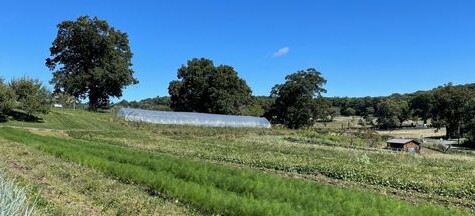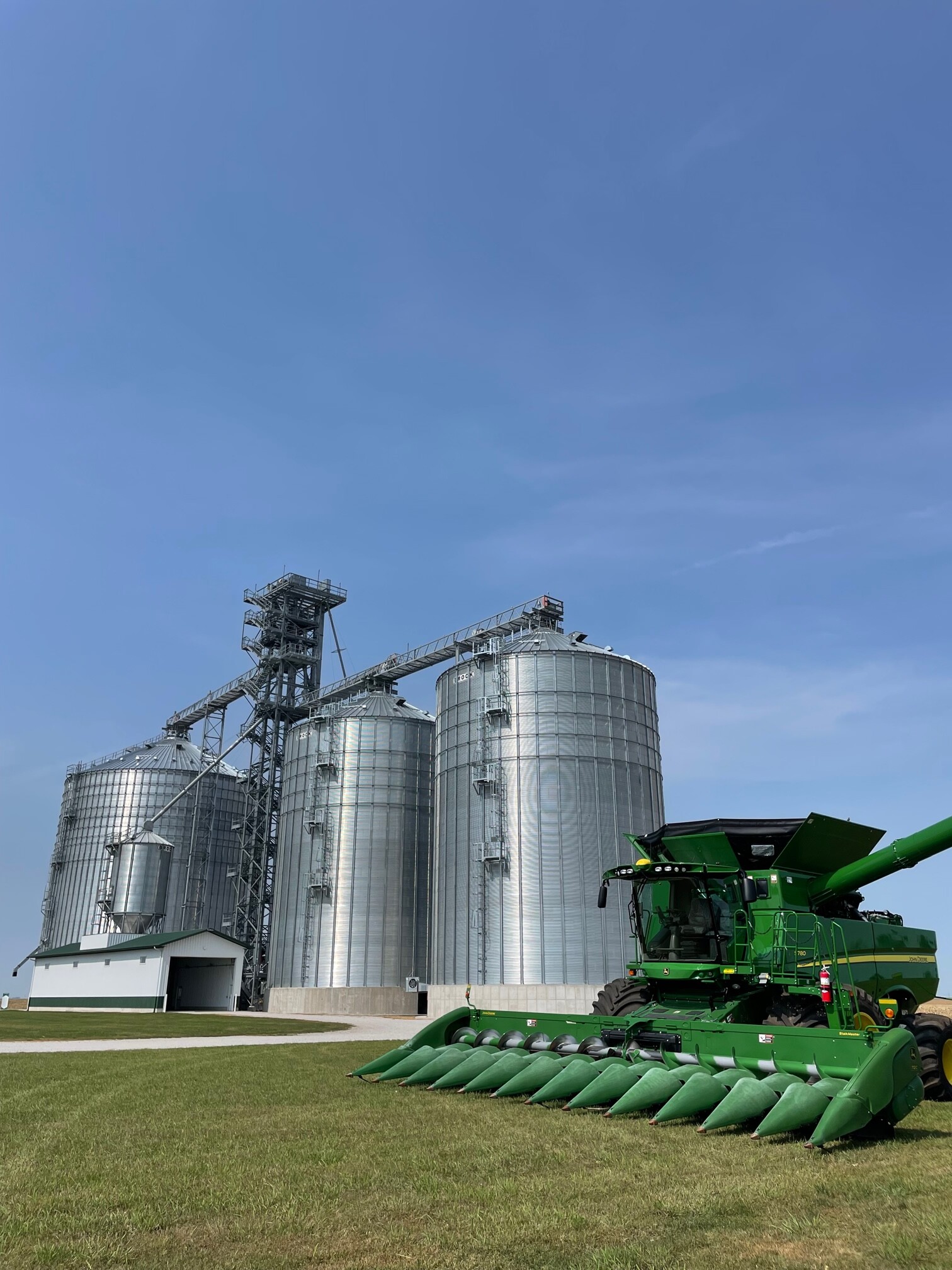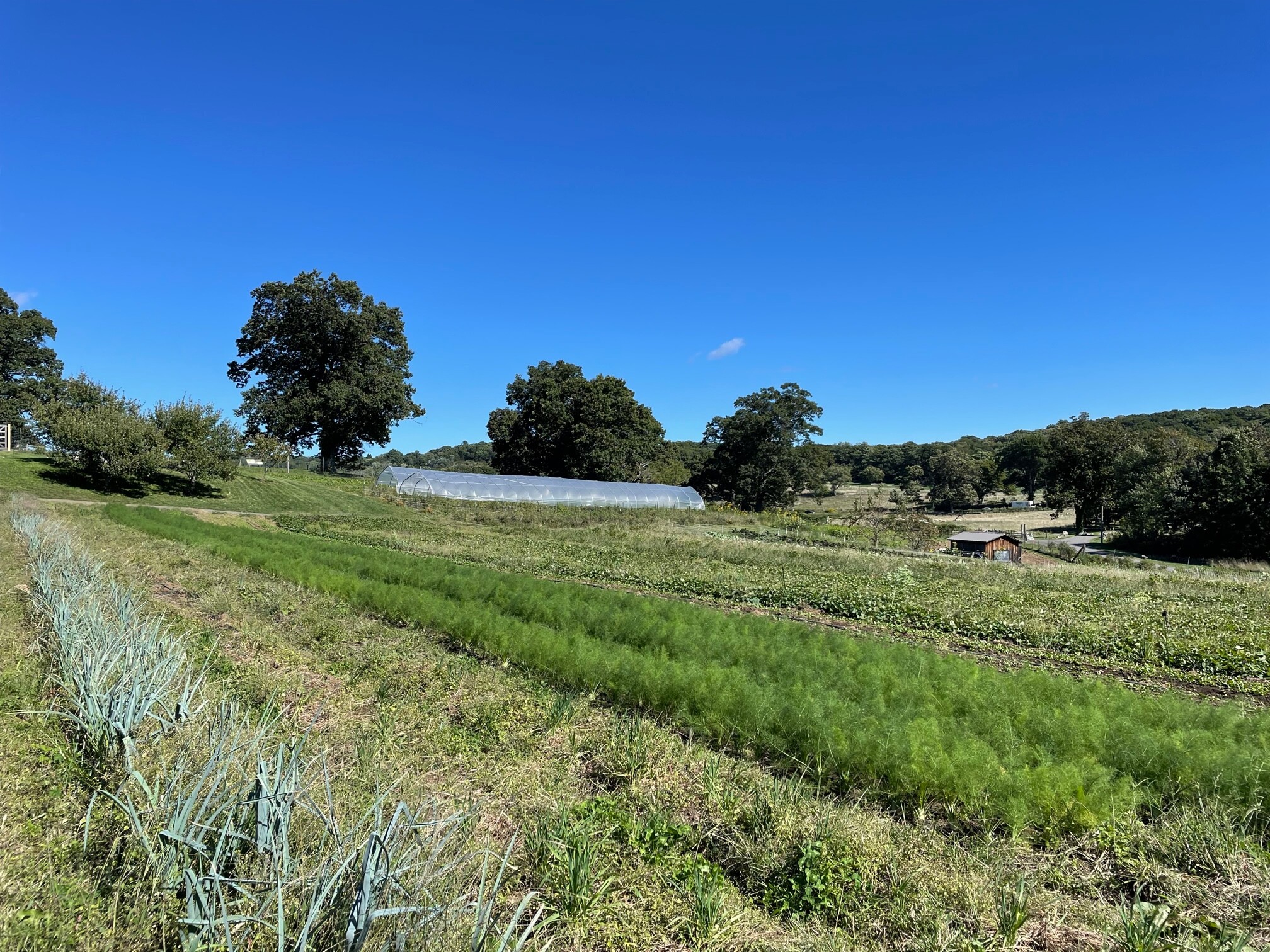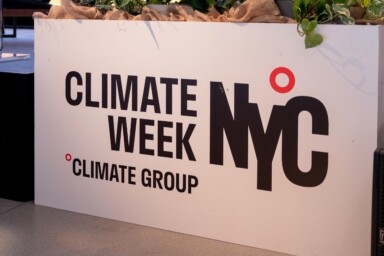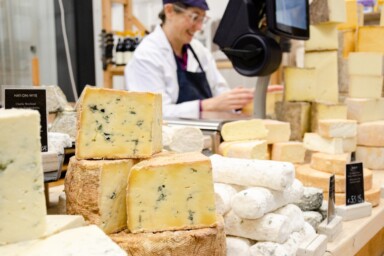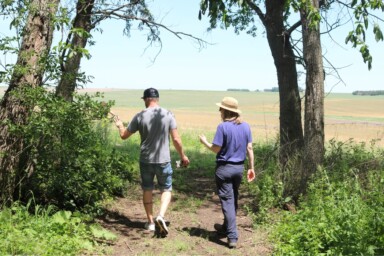Cattle farming in the US
On the last day of the conference, USFRA organised two field trips for a small group of us. The first visit was to a 9000-cow dairy. The cows were all in long pens, so they could move around and interact with each other, but in a fairly limited way. They then walked through to be milked in a rotating robotic parlour, three times a day. The pens are all flushed through every 30 minutes or so to siphon the manure out of the building and into a lagoon. There were then three anaerobic digesters which were used to capture the methane from the manure which would then generate electricity. Condition wise, the animals looked well – not like some of the horror documentaries where you can see their ribs, but their udders are enormous. However, my overwhelming observation (which is, of course, subjective) was that they just seemed to have no shine behind the eyes. I found it quite sad to think they wouldn’t ever see sunlight.
Everything in this system is controlled – the temperature, air flow, exactly how much feed the animals have, their veterinary health – all incredibly efficient and productive. However, I couldn’t help wondering how the farm would fare if assessed using the Global Farm Metric, which as well as these productivity measures, also includes an assessment of the whole farm biodiversity, soil health, community engagement and other such indicators. I’m not convinced these would be deemed as ‘success indicators’ on a farm of this scale, but I stand to be proved wrong.
We then went to a beef feedlot operation. This farm brings in calves a few months old and then feeds them up until they’re ready to be finished. They had been inserting the ‘implants’ into the new calves (containing the slow-release growth hormones) earlier that day. The animals were all bedded on a layer of straw and reeds about a meter deep. Again, they clearly weren’t suffering, and the farmer was impressively knowledgeable; this type of farming system is what the food industry is demanding – high output, low cost – and the farmer was doing a good job of delivering on that. If we want to change the system, we need to change the economic drivers.
The next day, I drove across the state from Des Moines to Chicago, stopping halfway to visit Mitchell Hora of Continuum Ag, a highly respected and innovative farmer helping farmers better measure and understand their soil health. Mitchell is a fascinating young guy, challenging the status quo and applying some really interesting practices to his corn and soy operation, including the use of soil inoculants. This, along with cover cropping, has increased his SOM (soil organic matter) from 2% to 6% on average across the farm, which is impressive.
The base of the inoculants was the manure from the local indoor hog unit. When I questioned this and asked if using such manure could genuinely be considered as regenerative, he said it was the only way Midwest farmers were going to reduce their dependence on external inputs. He still uses some herbicides but has almost eliminated his use of synthetic fertiliser. When I asked if the farmers he knew would consider introducing a rotation with grazing livestock, he laughed – too much work, not enough financial reward, not going to happen.
Feeding the Midwest
The Midwest is a real puzzle in that sense. How do we turn these states of continuous corn and soy (Google tells me it’s 127 million acres worth, and by the way, none of it is used for human food – all biodiesel, ethanol for packaging, etc, and animal feed) into a genuinely regenerative landscape? To be honest, I’m not sure of the answer but I’m sure people like Mitchell can help us come up with a direction of travel. It made me think a ‘Feeding the Midwest’ report would be a very interesting study to do. We should also do some GFM studies on these farms and critique the data; I think that’s the only way we’re going to be able to really understand the genuine impact of different farming systems and from this, start to visualise a way forward.
Heading on to Allentown, Pennsylvania, I went to visit Anthony Rodale (past chair of the SFT) and Ed Baldrige (current Director Treasurer of our US board, the Sustainable Food Alliance). I attended the Rodale Institute’s Organic Pioneer Awards dinner which was a wonderful evening celebrating the work of producers and leaders from across the US.
Finally, I landed in NYC for Climate Week, where I attended a number of interesting events including the New York Times Summit (although I have to say some of these sessions, including the one on food were quite disappointing) and events connected to the Sustainable Markets Initiative. It was a great opportunity to meet a number of people that the SFT is working closely with, including colleagues from the Ellen MacArthur Foundation, EAT, Regen10, Stone Barns and the World Benchmarking Alliance.
A trip to remember
I’ve spent a fair bit of time in the States over the years, but this trip was, in many ways, the most eye opening. It’s clear that we’re on the precipice of a tipping point with food and agriculture – I’m just not quite sure we know exactly where we’re tipping yet. We still have a lot of work to do to build consensus around the principles and characteristics of the farms of our future in different parts of the world, and the mechanisms needed to help get us there.
But most importantly, it served to reaffirm to me that we need to learn from farmers, both those doing the ‘right’ thing (in our eyes) as well as those who, by no fault of their own, are following the economic signals given to them, which for many is driving productivity at all costs.
I feel an odd mixture of things at the moment – a little terrified by the scale of the challenge we face, but also optimistic and excited by some of the solutions we’re starting to see emerge. COP27 is our next mission. We’ll keep you up to date on progress!
